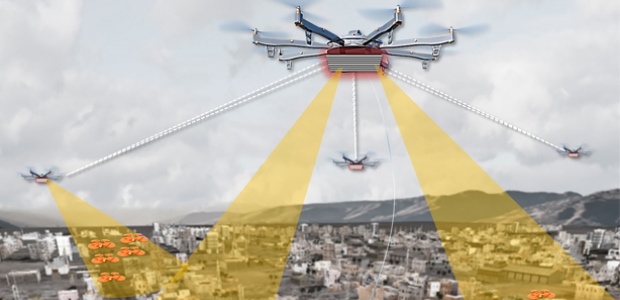
DARPA Aerial Dragnet Program Seeks to Monitor Drones
Although its focus is to protect military troops in urban areas overseas, such a system could be used to protect U.S. cities from terrorist threats.
The Defense Advanced Research Projects Agency (DARPA) has announced its Aerial Dragnet program, which is seeking innovative technologies to provide wide-area surveillance of all drones operating below 1,000 feet in a large city. The agency said the program's focus is on protecting military troops operating in urban areas overseas, but the system also might be used in civilian applications to help protect U.S. cities from terrorist threats.
"Commercial websites currently exist that display in real time the tracks of relatively high and fast aircraft—from small general aviation planes to large airliners—all overlaid on geographical maps as they fly around the country and the world," said Jeff Krolik, DARPA's program manager. "We want a similar capability for identifying and tracking slower, low-flying unmanned aerial systems, particularly in urban environments."
DARPA has scheduled a Proposers Day for Sept. 26 in Arlington, Va.
The agency's announcement said systems are being developed for tracking small drones by extending surveillance methods used in open areas where large line-of-sight buffers mitigate the threat, but such systems are not practical for urban terrain: "Aerial Dragnet seeks to leapfrog these approaches by developing systems adapted to the fundamental physics of small UAS in urban environments that could enable non-line-of-sight (NLOS) tracking and identification of a wide range of slow, low-flying threats. The program seeks an array of innovative approaches, but notionally envisions a network of surveillance nodes, each providing coverage of a neighborhood-sized urban area, perhaps mounted on tethered or long-endurance UAS. Using sensor technologies that can look over and between buildings, the surveillance nodes would maintain UAS tracks even when the craft disappear from sight around corners or behind objects. The output of the Aerial Dragnet system would be a continually updated common operational picture (COP) of the airspace at altitudes below where current aircraft surveillance systems can monitor, disseminated electronically to authorized users via secure data links. Because of the large market for inexpensive small UAS, the program will focus on combining low cost sensor hardware with software-defined signal processing hosted on existing UAS platforms. The resulting surveillance systems would thus be cost-effectively scalable for larger coverage areas and rapidly upgradable as new, more capable and economical versions of component technologies become available."
With this in mind, the program is looking for teams with expertise in sensors, signal processing, and networked autonomy.